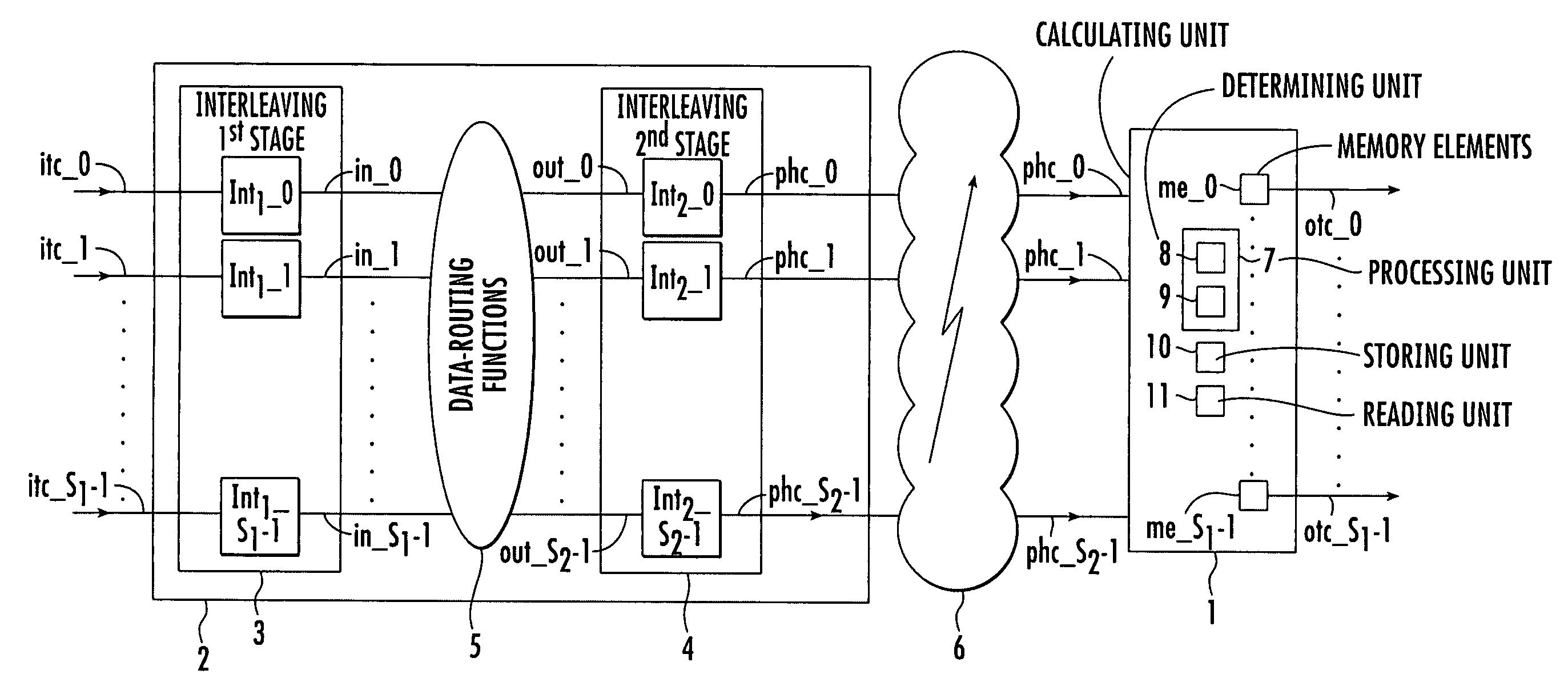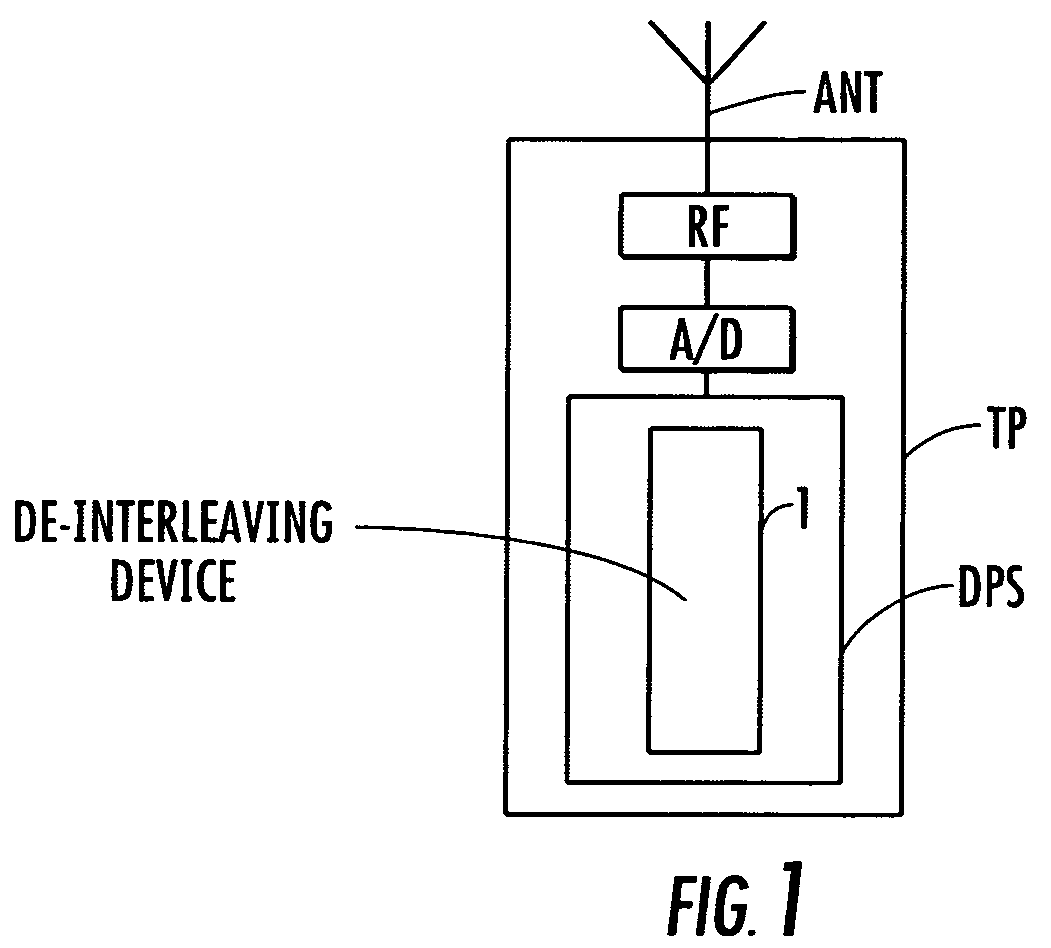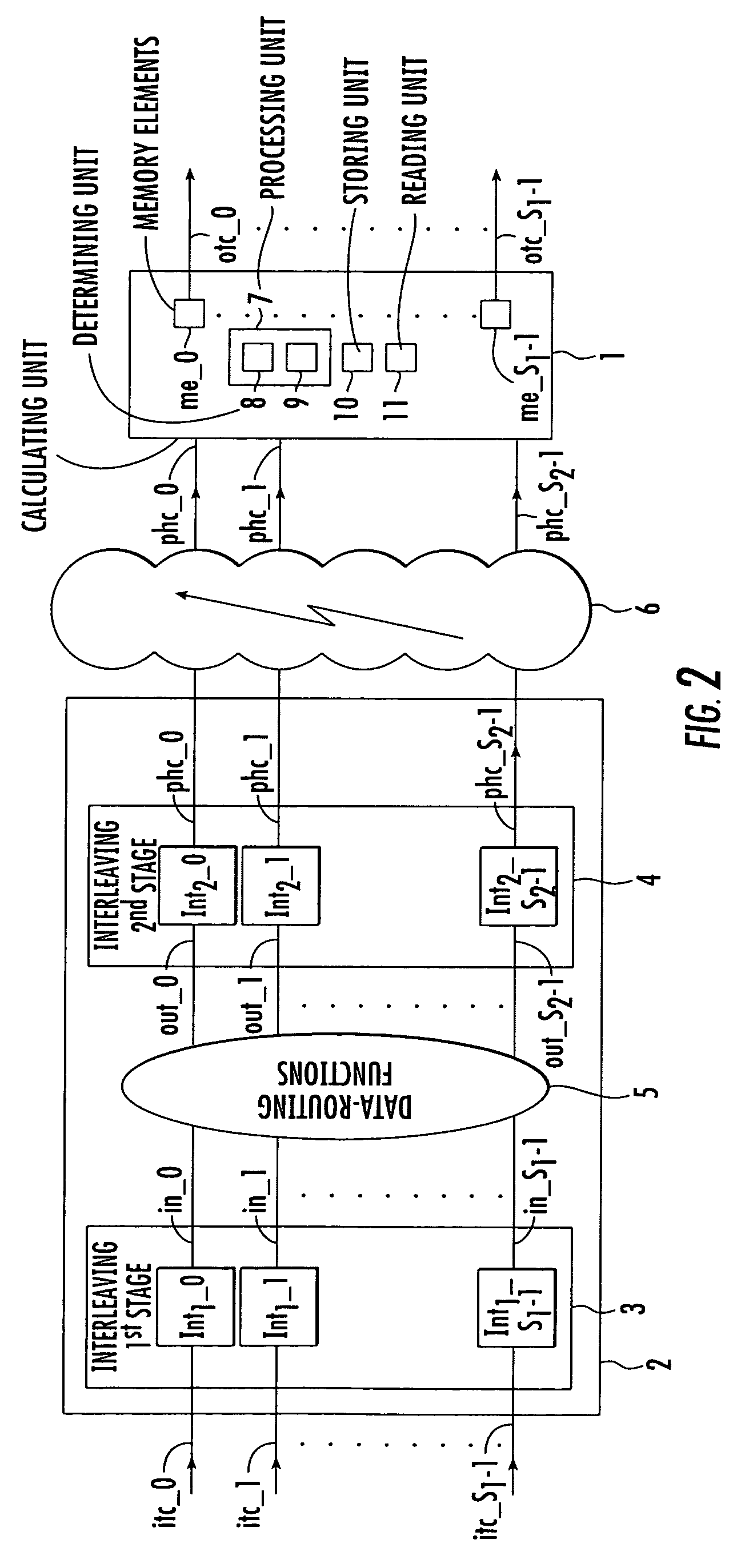Method of de-interleaving interleaved data samples sequences, and associated system
a data sample and sequence technology, applied in the field of de-interleaving sequences of interleaved data samples, can solve the problems of reducing the necessary memory size and memory access rate, affecting and achieve the effect of great impacting the overall die area and power consumption
- Summary
- Abstract
- Description
- Claims
- Application Information
AI Technical Summary
Benefits of technology
Problems solved by technology
Method used
Image
Examples
Embodiment Construction
[0035]Referring now FIG. 1, a de-interleaving system according to the invention is illustrated, which is incorporated in the reception chain of a cellular mobile phone TP. However, the invention is not limited to this particular application.
[0036]The interleaved signal is received by the antenna ANT and processed by the radio frequency stage RF of the receiver. At the output of the RF stage, the signal is converted into the digital domain by an A / D converter. The converted signal is transmitted to a digital process stage DPS which comprises a system 1 of de-interleaving according to the invention, and processes the digital baseband signal.
[0037]Referring now to FIG. 2, a two-stage multi-interleaving device 2 is represented. This term means a device with two stages, each stage having a plurality of interleavers. The two-stage multi-interleaving device 2 comprises a first interleaving stage 3, a second interleaving stage 4, and an inter-stage of predetermined data-routing functions 5 ...
PUM
 Login to View More
Login to View More Abstract
Description
Claims
Application Information
 Login to View More
Login to View More - R&D
- Intellectual Property
- Life Sciences
- Materials
- Tech Scout
- Unparalleled Data Quality
- Higher Quality Content
- 60% Fewer Hallucinations
Browse by: Latest US Patents, China's latest patents, Technical Efficacy Thesaurus, Application Domain, Technology Topic, Popular Technical Reports.
© 2025 PatSnap. All rights reserved.Legal|Privacy policy|Modern Slavery Act Transparency Statement|Sitemap|About US| Contact US: help@patsnap.com



